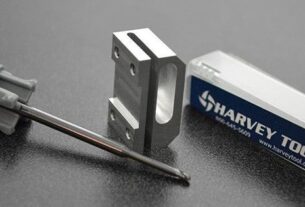Are you looking for a reliable and efficient way to clean pipelines, tanks, and other industrial equipment? Look no further than pig tools!
Pigging is a process used in various industries to clean, inspect, and maintain pipelines. Pig tools, also known as pipeline pigs or simply “pigs,” are specialized devices that are inserted into the pipeline and pushed along by the flow of the product being transported.
In this comprehensive guide, we’ll cover everything you need to know about pig tools – from choosing the right one for your application to using it effectively. So let’s get started!
Why Use Pig Tools?
Before we dive into the details of pig tools, let’s first understand why they are necessary.
Over time, pipelines can accumulate debris such as sediment, scale, rust, and other contaminants. If left unchecked, these buildups can cause blockages and reduce the efficiency of the pipeline. In extreme cases, they can even lead to equipment failure.
That’s where pigging comes in. By inserting a pig tool into the pipeline, you can remove these deposits and keep your equipment running smoothly. This not only saves you time and money but also ensures that your products are transported safely and efficiently.
Types of Pig Tools
There are several types of pig tools available on the market today. Here are some of the most common ones:
1. Cleaning Pigs: These pigs are designed to remove debris from pipelines. They come in various sizes and shapes depending on the type of pipeline being cleaned.
2. Inspection Pigs: These pigs have cameras or sensors attached to them that allow operators to inspect the inside of the pipeline for damage or defects.
3. Gauging Pigs: These pigs measure the diameter of the pipeline to ensure that it meets regulatory standards.
4. Pipeline Separators: These devices separate two different products being transported in the same pipeline to prevent contamination.
Choosing the Right Pig Tool
When choosing a pig tool, there are several factors to consider:
1. Pipeline Type: The type of pipeline you’re working with will determine the size and shape of the pig tool you need. For example, a smaller pig tool may be needed for a narrow pipeline, while a larger one may be required for a wider one.
2. Product Being Transported: The product being transported can also affect your choice of pig tool. For example, if you’re transporting food products, you’ll want to use a pig tool that is made from food-grade materials.
3. Purpose: Consider why you need to use a pig tool and what results you’re looking for. If you’re simply cleaning the pipeline, a standard cleaning pig may suffice. However, if you need to inspect or gauge the pipeline, you’ll need a specialized pig tool.
Using Pig Tools Effectively
Now that you’ve chosen the right pig tool for your needs, it’s time to learn how to use it effectively. Here are some tips to keep in mind:
1. Preparation: Before inserting the pig tool into the pipeline, make sure that it’s clean and free of debris. Also, ensure that all valves and pumps are properly aligned and shut off.
2. Insertion: Carefully insert the pig tool into the pipeline using a launch tube or other insertion device. Make sure that it’s properly centered in the pipe.
3. Monitoring: Once the pig tool is inserted, monitor its progress using pressure gauges or other monitoring devices. This will help you identify any issues or blockages that may arise.
4. Retrieval: Once the pig tool has reached its destination, retrieve it carefully using a retrieval device or similar equipment.
Conclusion
Pig tools are an essential part of many industries, allowing operators to clean and maintain pipelines efficiently and safely. By choosing the right pig tool for your needs and using it effectively, you can ensure that your equipment runs smoothly and your products are transported safely.
For more information on pig tools and pigging technology, check out the wiki reference below. Additionally, be sure to visit some of the authoritative websites linked in this article for further reading and resources. Happy pigging!
Wiki Reference: https://en.wikipedia.org/wiki/Pigging




